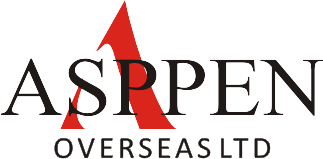Introduction
The United States is a leading destination for international students seeking high-quality education, diverse cultural experiences, and abundant opportunities for personal and professional growth. With its prestigious universities, innovative research facilities, and vibrant communities, the U.S. offers a dynamic learning environment for students from around the world.
Why Study in the USA?
- Quality Education: The U.S. is home to many top-ranked universities known for their academic excellence and cutting-edge research.
- Diverse Courses: Universities offer a wide range of programs across various fields, allowing students to pursue their academic interests.
- Innovative Environment: Students have access to state-of-the-art facilities and resources, fostering creativity and innovation.
- Cultural Diversity: The U.S. is a melting pot of cultures, providing an enriching multicultural experience for international students.
- Career Opportunities: Graduates from U.S. universities are highly sought after by employers worldwide.
Top Universities
- Harvard University
- Massachusetts Institute of Technology (MIT)
- Stanford University
- California Institute of Technology (Caltech)
- University of California, Berkeley
- Columbia University
- Yale University
Popular Courses
- Business Administration and Management
- Engineering and Technology
- Health Sciences and Medicine
- Computer Science and Information Technology
- Arts and Humanities
- Social Sciences
Education System
The U.S. education system is decentralized, with each state responsible for its own educational policies. Higher education consists of universities, colleges, and community colleges. The system emphasizes a broad-based education with opportunities for specialization.
Application Process and Steps
- Research: Explore universities and programs that align with your academic and career goals.
- Standardized Tests: Take standardized tests such as the SAT or ACT for undergraduate studies, or the GRE or GMAT for graduate studies.
- Application: Complete online applications for universities, including submission of academic transcripts, standardized test scores, letters of recommendation, and essays.
- Visa Application: Apply for a student visa (F-1 or J-1) after receiving acceptance from a SEVIS-approved institution.
- Financial Documentation: Provide proof of funds to cover tuition fees and living expenses.
- Interviews: Attend interviews, if required, for admission or visa purposes.
Eligibility
- Academic Qualifications: Meet the academic requirements for the chosen program, including minimum GPA and standardized test scores.
- Language Proficiency: Demonstrate English language proficiency through tests like TOEFL or IELTS.
- Financial Stability: Provide evidence of sufficient funds to cover tuition fees and living expenses.
- Health Insurance: Obtain health insurance coverage as required by the university and visa regulations.
Cost of Studying
- Tuition Fees: Vary widely depending on the institution and program, ranging from USD 20,000 to USD 60,000 per year for undergraduate programs, and higher for graduate programs.
- Living Expenses: Estimated at USD 10,000 to USD 25,000 per year, including accommodation, food, transportation, and personal expenses.
Scholarships and Financial Aid
- Merit-based Scholarships: Offered by universities based on academic excellence, extracurricular activities, and leadership potential.
- Need-based Scholarships: Provide financial assistance to students based on demonstrated financial need.
- External Scholarships: Offered by government agencies, organizations, and foundations to support international students.
Work Opportunities
- On-Campus Employment: International students can work on campus for up to 20 hours per week during the academic year and full-time during breaks.
- Optional Practical Training (OPT): Allows students to work off-campus in a field related to their studies for up to 12 months after graduation.
Post-Study Work Visa
- Optional Practical Training (OPT): Provides temporary work authorization for up to 12 months after completing a degree program, with possible extensions for STEM graduates.
Visa Requirements
- Student Visa (F-1 or J-1): Required for full-time academic studies at a SEVIS-approved institution. Applicants must demonstrate intent to return to their home country upon completion of studies.
Health and Safety
- Health Insurance: Mandatory for international students to have health insurance coverage while studying in the U.S.
- Safety: While the U.S. is generally safe, it's essential for students to be aware of safety precautions and emergency procedures.
Living Expenses
- General Living Costs: Estimated at USD 10,000 to USD 25,000 per year, covering accommodation, food, transportation, and personal expenses.
Accommodation Costs
- On-Campus Housing: Costs vary depending on the institution, location, and type of accommodation, ranging from USD 5,000 to USD 15,000 per year.
- Off-Campus Housing: Renting an apartment or shared housing can range from USD 500 to USD 2,000 per month, depending on the location and amenities.
Tips for a Successful Experience
- Start Early: Begin the application process well in advance to meet deadlines and requirements.
- Research Thoroughly: Explore different universities, programs, and scholarship opportunities to find the best fit for your academic and personal goals.
- Connect with Peers: Join student organizations and engage with classmates to build a supportive network and make the most of your university experience.
- Take Care of Yourself: Prioritize your physical and mental health, and seek support if needed from campus resources or counseling services.
- Explore Beyond the Classroom: Take advantage of extracurricular activities, internships, and cultural events to enhance your learning experience and broaden your horizons.
Studying in the USA offers a world-class education, diverse cultural experiences, and abundant opportunities for personal and professional growth, making it an exciting and rewarding choice for international students.


